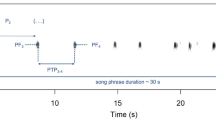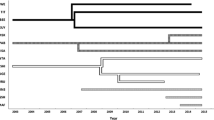Abstract
Differential treatment of neighbours and strangers (the dear enemy phenomenon) can reduce the costly effects of territory defence. Individual recognition, and by extension the dear enemy phenomenon, was examined in the cordylid lizard Platysaurus broadleyi. I had no knowledge of familiarity between individuals and therefore classed intruders as neighbours or non-neighbours and tested for differences in agonistic response consistent with the dear enemy phenomenon. In the dear enemy phenomenon, levels of aggression are inversely related to degree of familiarity such that residents are more tolerant of immediate neighbours than distant territory holders. A manipulative field experiment in conjunction with field observations of known territory holders revealed that resident males allowed neighbours to approach more closely than non-neighbours before challenging them, residents were more aggressive towards non-neighbours than neighbours, contests between neighbours were significantly longer than between neighbours and non-neighbours and contests between residents and non-neighbours were likely to result in a win for the resident, while neighbours frequently drew contests. These results suggest a level of recognition consistent with the dear enemy phenomenon. I also manipulated front leg colour to test the hypothesis that it alone could serve as a cue for individual recognition. I found no support for this hypothesis and suggest that multiple cues operate in individual recognition.
Similar content being viewed by others
Author information
Authors and Affiliations
Additional information
Received: 4 March 1999 / Received in revised form: 11 April 1999 / Accepted: 19 April 1999
Rights and permissions
About this article
Cite this article
Whiting, M. When to be neighbourly: differential agonistic responses in the lizard Platysaurus broadleyi . Behav Ecol Sociobiol 46, 210–214 (1999). https://doi.org/10.1007/s002650050611
Issue Date:
DOI: https://doi.org/10.1007/s002650050611




